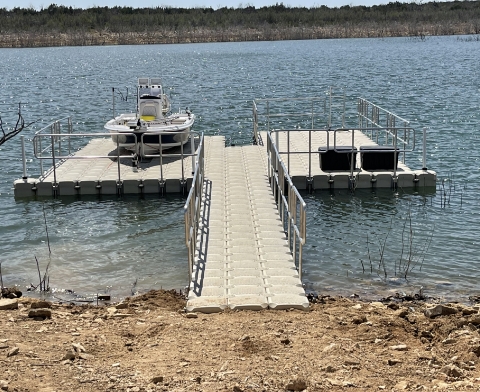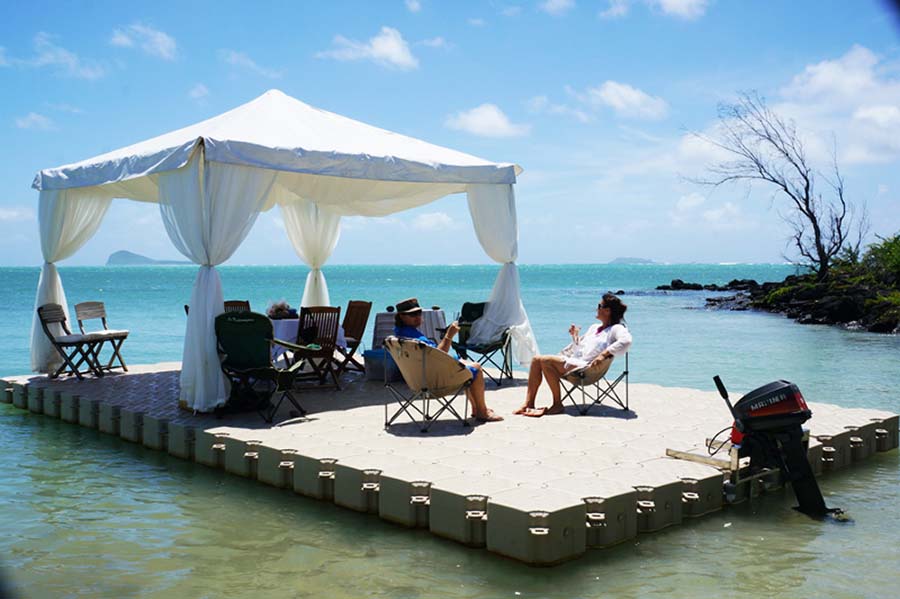Floating Docks: The Smart Choice for Modern Beachfront Living and Entertainment
Floating Docks: The Smart Choice for Modern Beachfront Living and Entertainment
Blog Article
Develop the Perfect Docking Option With Floating Docks
Floating docks present a versatile option for a selection of maritime requirements, adjusting perfectly to rising and fall water degrees and diverse vessel types. As we discover the essential elements that add to the efficiency of floating docks, a number of crucial aspects concerning security and maintenance will emerge, increasing inquiries about how to maximize your docking experience.

Advantages of Floating Docks
Floating docks offer various advantages that make them an ideal option for numerous maritime applications. Among the key benefits is their versatility to changing water levels. Unlike dealt with docks, floating docks rise and fall with the tide, guaranteeing regular ease of access for vessels. This feature is especially crucial in locations prone to considerable tidal changes or seasonal water level adjustments.
Furthermore, floating docks are generally simpler and quicker to install contrasted to standard set frameworks. Their modular design permits simple assembly and disassembly, facilitating maintenance and moving when necessary. This versatility is particularly valuable for temporary applications or in settings where problems might alter.
Floating docks likewise have a tendency to be more eco-friendly, as they minimize interruption to the seabed and surrounding aquatic environments. Their resilient nature lowers the threat of damages to aquatic life, advertising a healthier atmosphere. These docks can be personalized to suit different vessel dimensions, guaranteeing that they satisfy particular operational needs.
Ultimately, the mix of versatility, simplicity of installation, and environmental factors to consider makes floating docks a very effective remedy for a wide array of maritime needs.
Choosing the Right Products
Choosing the proper products for floating docks is vital to make certain stability, sturdiness, and durability. The selection of materials directly affects the dock's efficiency in numerous environmental problems, consisting of direct exposure to water, sunlight, and possible wear from aquatic web traffic.
Typical materials used for floating docks consist of aluminum, timber, and high-density polyethylene (HDPE) Light weight aluminum is lightweight, corrosion-resistant, and calls for minimal maintenance, making it an exceptional option for long life. However, its first cost can be higher compared to other materials.
Wood, while visually attractive and offering a traditional look, can be susceptible to rot and insect damage otherwise effectively dealt with. Making use of pressure-treated timber or normally resilient species like cedar or redwood can reduce these problems.
HDPE is a popular selection as a result of its resistance to UV rays and chemicals, along with being eco-friendly. floating docks. It is readily available and light-weight in various colors, enabling personalization
Ultimately, the ideal material selection will rely on details demands, consisting of budget plan, desired visual appeals, and environmental factors to consider. Mindful examination of these variables will certainly result in a successful and resilient floating dock remedy.
Design Considerations for Stability
When developing floating docks, making certain security is a basic aspect that can considerably influence their performance and security. Security in floating dock style is influenced by various variables, including buoyancy, weight distribution, and the setup of elements.
Weight distribution is essential; uniformly dispersing lots throughout the dock avoids tilting and improves security. Larger designs can provide increased stability, particularly in harsh water problems, while longer docks might need additional assistances to prevent drooping.
An additional crucial consideration is the ecological influence, including wave action and wind. Integrating functions such as sidewalls or skirting can help alleviate the impacts of ecological forces, preserving stability in adverse problems. Ultimately, a mix of thoughtful layout, material option, and understanding of environmental aspects will produce a floating dock that fulfills both security and security needs.
Setup Tips and Techniques

Following, protect the necessary licenses and abide by neighborhood laws, which may dictate installment techniques and environmental factors to consider. If required, engage a qualified contractor experienced in floating dock installations. Usage high-grade materials developed for marine environments to enhance durability and longevity.
When placing the dock, straighten it identical to browse around this web-site the coastline to floating dock company facilitate easy access. Ensure that the anchoring system is robust, utilizing concrete blocks or helical supports to maintain the dock versus wind and wave activity. It's vital to make up seasonal water degree fluctuations, consisting of possible ice activity in colder climates.
During the setup, verify the dock's floatation and security prior to settling the anchoring. Consistently examine the installment for any type of indicators of wear or damages. By complying with these strategies and ideas, you can achieve a protected, useful, and aesthetically pleasing floating dock setup that meets your needs.
Upkeep and Care Guidelines
Keeping and caring for floating docks is critical to extending their life-span and guaranteeing safe use. Normal evaluations should be conducted to recognize any kind of indicators of wear, damage, or aquatic development. Search for cracks, loose fittings, or discolored areas on the dock's surface area, as these issues can jeopardize architectural integrity.
Cleaning is essential. Utilize a stress washing machine to get rid of algae, barnacles, and debris, which can build up in time. For stubborn development, think about eco-friendly cleaning representatives that won't damage aquatic life.
Additionally, inspect the mooring lines and supports frequently to guarantee they are protected and totally free from deterioration. Change any frayed or harmed lines quickly to maintain security.
Throughout extreme weather, such as tornados or freezing conditions, take precautionary measures. Secure the dock with added mooring lines and, if possible, eliminate any kind of removable elements to avoid damage.
Final Thought
To conclude, the implementation of floating docks presents a effective and flexible docking solution suitable for numerous maritime applications. Their adaptability to fluctuating water levels, combined with a modular style, permits easy customization and relocation. Choosing suitable materials enhances both longevity and aesthetic charm, while careful consideration of security makes sure safety and security and long life. With appropriate installation and normal maintenance, floating docks can provide reliable and reliable docking experiences for Going Here a variety of vessels.
As we discover the crucial elements that add to the performance of floating docks, several crucial variables concerning security and maintenance will arise, increasing questions regarding just how to optimize your docking experience. Unlike dealt with docks, floating docks increase and loss with the tide, making sure regular access for vessels.When designing floating docks, making sure security is a fundamental aspect that can substantially influence their performance and safety. Stability in floating dock layout is influenced by numerous factors, including buoyancy, weight distribution, and the setup of components. Ultimately, a mix of thoughtful design, product option, and understanding of environmental variables will produce a floating dock that meets both stability and safety demands.
Report this page